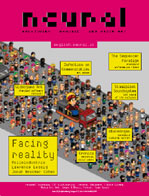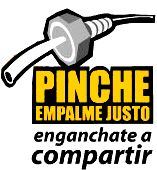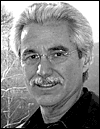 INTERVIEW: with Alessadro Ludovico
INTERVIEW: with Alessadro LudovicoBY: Ignacio Nieto
EXCERPT:
IN: I don't know of other publications that focus on electronic and printed publishing at the same time. Why did you take this decision? What do you think would be the virtues and defects in each of these expressions?
AL: Neural started as a printed magazine in 1993 and began online publications in 1997, but only three years later I started to update the website daily. When I started Neural.it I wanted to serve an existing community, with the most idealistic journalistic approach: connecting info and ideas to let people find inspiration, in order to help them developingtheir own projects, confronting with others, in a sort of crucial info-node, free for all. Moreover I'm currently theoretically researching the paper/pixel relationship, and I've found many legacies and dichotomies at the same time.
Click here to read the complete interview in English or Spanish language versions.
 INTERVIEW: con PEJ Collective, Argentina
INTERVIEW: con PEJ Collective, ArgentinaPOR: Ignacio Nieto
EXCERPT:
PEJ Collective: Nuestro organigrama es un móvil de caràcter tàctico, algo semejante a las formas de difusión propias de las pequeñas empresas que no cuentan con capital económico suficiente para competir con las grandes marcas. Aprovechando al màximo los instersticios en los espacios institucionales y comunicacionales con una estricta economía de recursos materiales, nuestra política empresarial consiste en lograr mayor visibilidad con los mínimos recursos.
Click here to read complete interview in Spanish.
 INTERVIEW: The Philosophy of Culture with Mark Taylor
INTERVIEW: The Philosophy of Culture with Mark TaylorBY: Roy Christopher
EXCERPT: Mark C. Taylor is one of those people you stumble upon and wonder why you were previously roaming around unawares. His countless books explore many areas of culture, philosophy, art, theory, and, most recently, commerce. I originally came across his work while doing research on artist Mark Tansey (Taylor's The Picture in Question explores the mix of messages and theory in Tansey's paintings). Having read his book "The Moment of Complexity" a few months ago, I was intrigued by Taylor's consolidation of seemingly disparate theoretical areas (e.g., postmodernism/post-structuralism, chaos/catastrophe/ complexity theory, network theory, the pixelated artwork of Chuck Close, etc.) into a new critical perspective. Not only that, but the book outlines how this new perspective can -- and should -- be implemented in education. A feat around which Taylor has organized the Global Education Network.
Click here to read interview.
